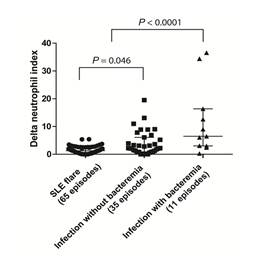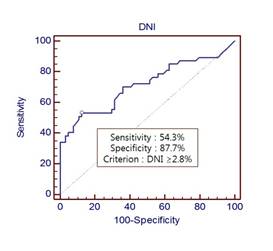Session Information
Session Type: Abstract Submissions (ACR)
Disclosure:
Y. J. Ha,
None;
J. Y. Pyo,
None;
J. S. Park,
None;
H. J. Park,
None;
J. J. Song,
None;
Y. B. Park,
None;
S. K. Lee,
None;
S. W. Lee,
None.
« Back to 2013 ACR/ARHP Annual Meeting
ACR Meeting Abstracts - https://acrabstracts.org/abstract/delta-neutrophil-index-as-a-marker-for-differential-diagnosis-between-flare-and-infection-in-febrile-systemic-lupus-erythematosus-patients/


